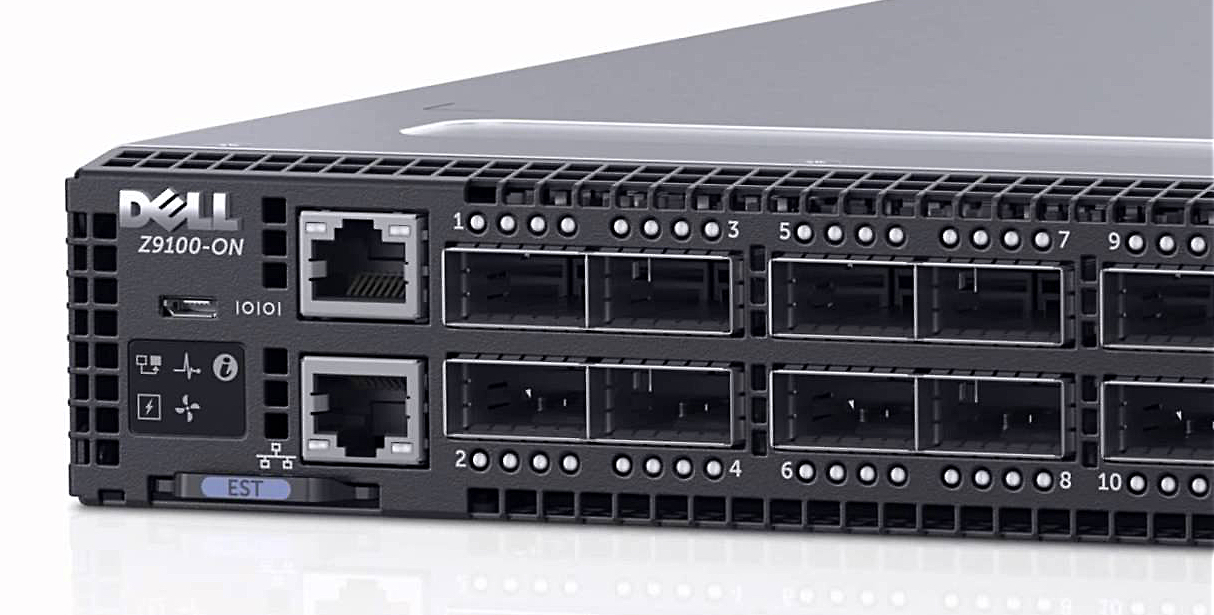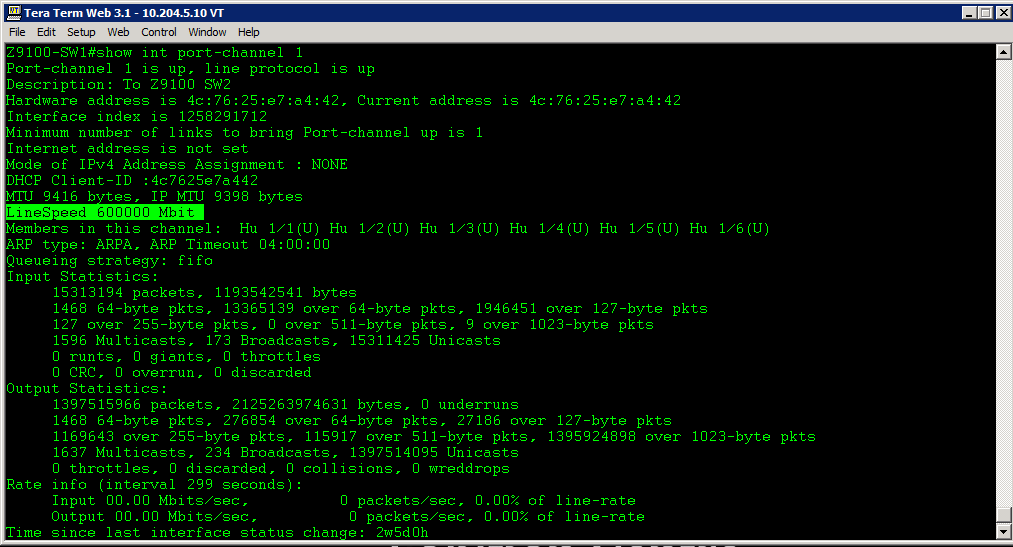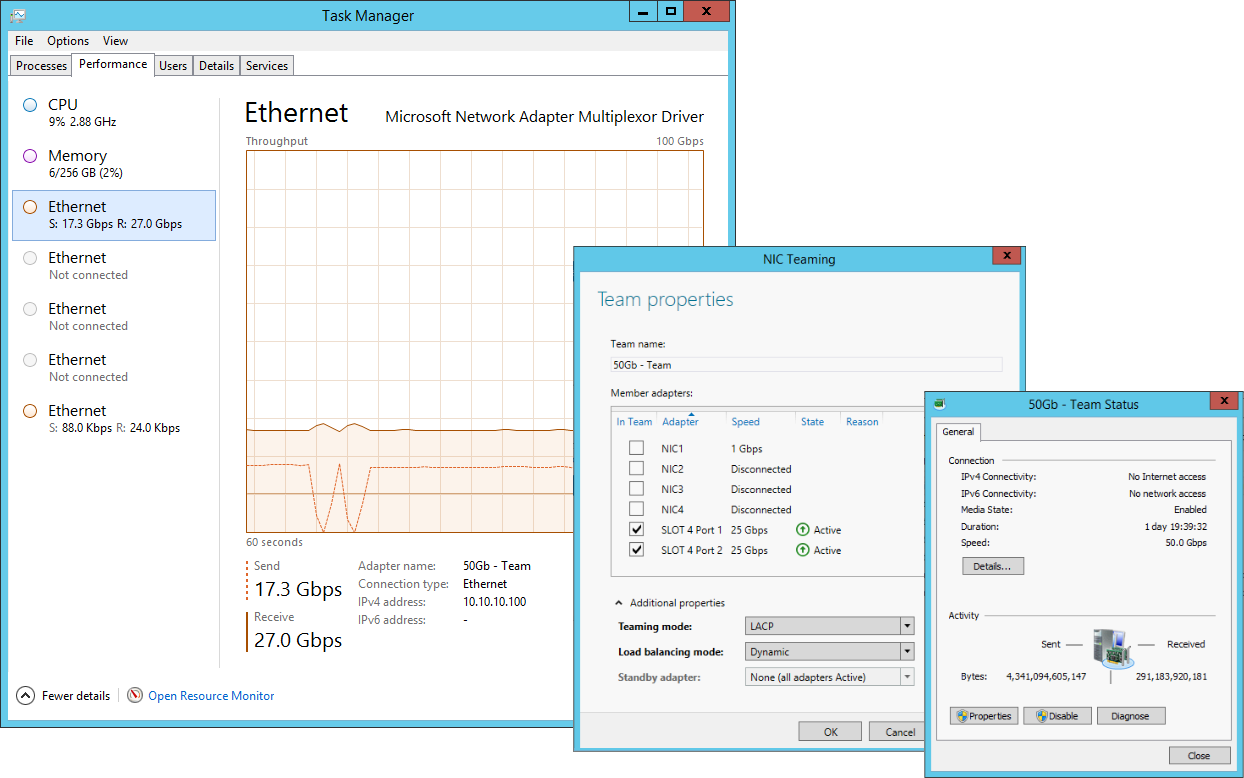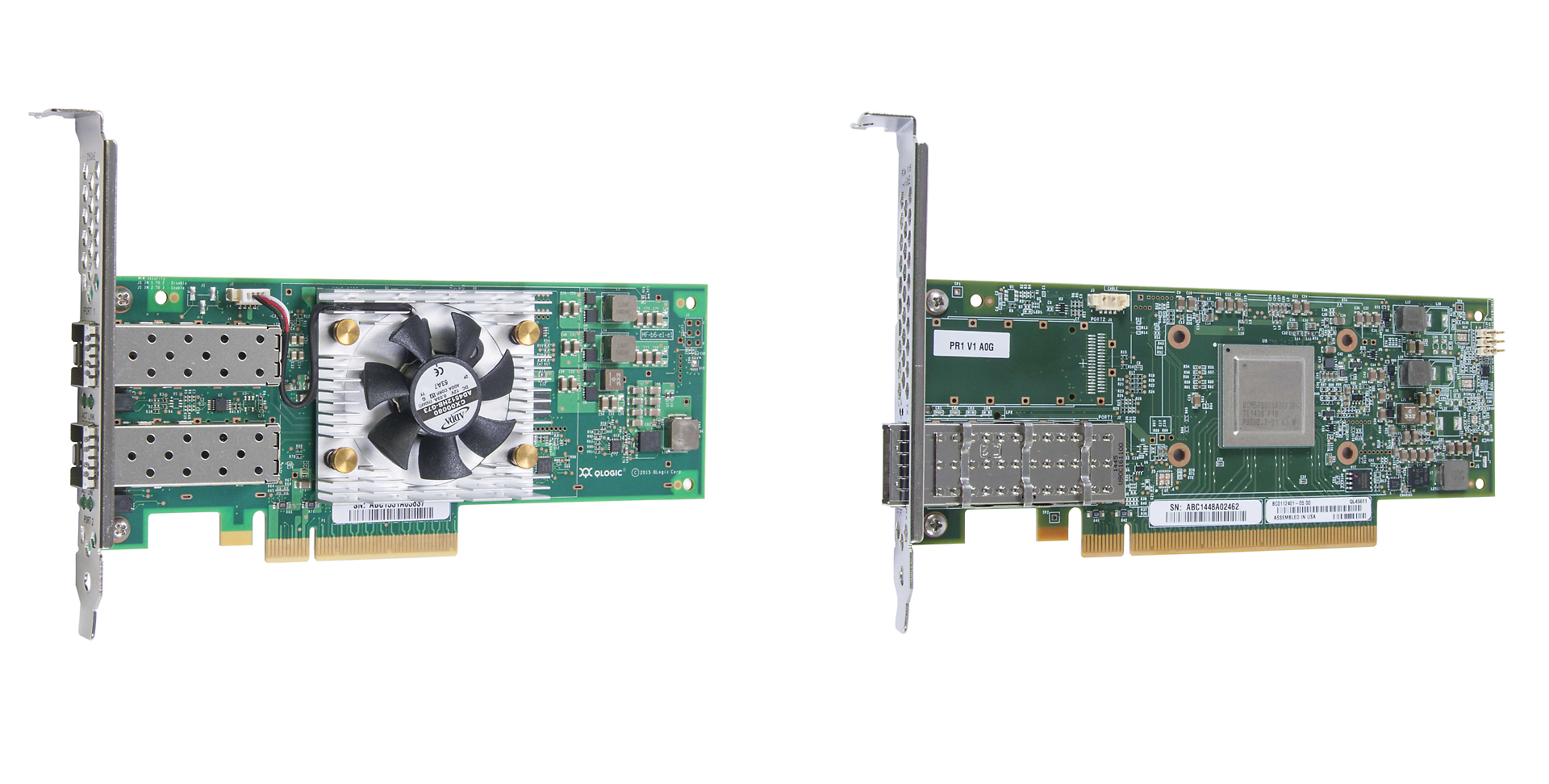Dell Networking Z9100-ON review
Dell will help you get ready for 100-Gigabit Ethernet


A high 100GbE port density, 1U form factor, multi-rate support, competitive costs per port and a choice of OSes – Dell’s Z9100-ON is the most versatile switch on the market
-
+
Big port density; Low price per 100GbE switch port; DNOS includes all L2/L3 features as standard; Superb performance
-
-
100GbE optical transceivers are expensive

Data centres, HPC and big cloud builders they all have a voracious appetite for network bandwidth which will soon make the move to 100-Gigabit (100GbE) a necessity. Dell's Z9100-ON is the first 1U multi-rate 100GbE switch to market and it aims to tempt big businesses with a low price per 100GbE port.
The Z9100-ON uses Broadcom's Tomahawk ASIC and crams 32 100GbE QSFP28 ports into its 1U chassis. These can be used at their maximum speed for switch-to-switch or server links and Dell also offers a big choice of break-out cables.
The cables allow the switch to support up to 64 50GbE, 128 25GbE or 128 10GbE links. Dell also has a range of QSFP+ transceivers for converting ports to 40GbE speeds.
The ON' in the model name indicates the switch is a member of Dell's Open Networking switch family. As with the S6000-ON (web ID:25369), it supports the ONIE (Open Network Install Environment) so, along with Dell's DNOS, it can run a range of qualified Linux-based OSes.
Switch hardware
The Z9100-ON targets core data centre and top-of-rack (ToR) applications and has a backplane capacity of 6.4Tbits/sec. The price we've shown includes the DNOS software with all L2/L3 features enabled.
Along with the 32 100GbE ports, it also has a couple of 10GbE SFP+ ports to one side. Dell has thoughtfully provided these to allow you to connect legacy servers or switches without wasting a 100GbE port.

Along with 32 100GbE ports, the Z9100-ON also has a pair of 10GbE ports for legacy equipment
Hardware redundancy is good as the Z9100-ON has dual hot-plug PSUs and five hot-plug fan modules. All are offered with forward or reverse flows allowing the switch to support data centres with hot-aisle or cold-aisle cooling.

The switch's power supplies and fan modules support hot-aisle or cold-aisle data centres
DNOS 9 features
Dell's DNOS software provides all traditional switching and routing capabilities and there are no hidden costs. It includes advanced routing features such BGP routing and OSPF as standard and not as expensive optional extras.
The switch supports up to 128 link aggregation groups (LAGs) each comprising up to eight ports. This is great for fast switch-to-switch links and we tested this by easily connecting two Z9100-ON switches together over six aggregated 100GbE links.
The Z9100-ON support's Dell's VLTs (virtual link trunks) allowing two switches to be placed in a high availability domain. The new mVLT (multi-VLT) feature now allows LAGs to be used to create multiple redundant connections between logical VLT domains.
VLTs and mVLTs are the building blocks of Dell's Active Fabric which employs a spine and leaf architecture. It allows businesses to move away from expensive chassis based switches and expand capacity simply by adding new switches as spine or leaf nodes.
Performance tests
QLogic supplied its new FastLinQ QL45212 dual-port 25GbE HBAs which we fitted in two PowerEdge R730 rack servers. Using Windows Server 2012 R2 Teaming, we created 50GbE LACP links for each one and connected them to dedicated Z9100-ON switches joined over a 600Gbps LAG.

From the DNOS CLI, we created a high-speed 600Gbps switch-to-switch LAG
For storage, the first server was equipped with a 1.2TB Fusion-IO MLC SSD and three Samsung SSDs in a RAID0 stripe. On the second server, we had three Samsung SSDs also in a stripe which contained our test folder with three large files totaling 230GB.
To generate a high throughput, we used a Windows script to simultaneously copy the test folder to the other server's ioDrive and Samsung SSD array. Using the Windows Task Manager, we watched network throughput peak at 36.5Gbps with DNOS reporting switch-to-switch LAG utilisation of only 6 percent.
We ran a further test using the iPerf utility loaded on both servers and running bidirectional network throughput tests. Using four parallel client streams on each iPerf instance, we recorded a stonking cumulative network throughput of over 44Gbps.

Using Windows Teaming, we created 50GbE server links and watched iPerf generate a massive 44Gbps throughput
Pricey optics
The Z9100-ON is available now along with the full range of break-out cables and optics. We expect most early adopters will keep 100GbE within the data centre as long-reach QSFP28 transceivers are expensive.
The SR4 850nm optical transceiver has a 100-metre reach and costs a shade over 2,000. The LR4-Lite 1310nm optic supports up to 2kms and costs 10,706 while the full LR4 optic increases the reach to 10kms but drains your wallet to the tune of 14,609.
Switch management features during our tests were limited to the CLI, but support for Dell's Active Fabric Manager (AFM) and OpenManage Network Manager (OMNM) utilities will be implemented soon. AFM provisions switches in a network fabric, while OMNM uses SNMP to provide views of the physical status of switches.
QLogic has also announced immediate availability of its FastLinQ QL45000 series of server adapters. Along with the QL45212 HBAs we used for testing, QLogic offers the single-port QL45211 25GbE and QL45611 100GbE HBAs.

QLogic offers a choice of 25GbE and 100GbE server adapters
Conclusions
The discussions are over as 100GbE is right here, right now. As the industry's first multi-rate 100GbE 1U switch, Dell's Z9100-ON sets a high standard for the competition to follow.
Support for a wide range of port speeds allows early adopters to move to 25GbE now and upgrade to 40GbE, 50GbE or 100GbE when the price is right. Dell has delivered on its early promises to reduce the price per 100GbE switch port and support for ONIE allows you to pick and choose the OS you want.
Verdict
A high 100GbE port density, 1U form factor, multi-rate support, competitive costs per port and a choice of OSes – Dell’s Z9100-ON is the most versatile switch on the market
Chassis: 1U rack
Ports: 32 x 100GbE QSFP28
Backplane: 6.4Tbps full duplex
Forwarding capacity: Up to 4,400Mpps
Power: 2 x 750W hot-plug PSUs
Cooling: 5 x hot-plug dual-fan standard or reverse flow modules
Other ports: 2 x 10GbE SFP+, mini-USB console
Software: Dell DNOS 9
Get the ITPro daily newsletter
Sign up today and you will receive a free copy of our Future Focus 2025 report - the leading guidance on AI, cybersecurity and other IT challenges as per 700+ senior executives
Dave is an IT consultant and freelance journalist specialising in hands-on reviews of computer networking products covering all market sectors from small businesses to enterprises. Founder of Binary Testing Ltd – the UK’s premier independent network testing laboratory - Dave has over 45 years of experience in the IT industry.
Dave has produced many thousands of in-depth business networking product reviews from his lab which have been reproduced globally. Writing for ITPro and its sister title, PC Pro, he covers all areas of business IT infrastructure, including servers, storage, network security, data protection, cloud, infrastructure and services.
-
 ‘Phishing kits are a force multiplier': Cheap cyber crime kits can be bought on the dark web for less than $25 – and experts warn it’s lowering the barrier of entry for amateur hackers
‘Phishing kits are a force multiplier': Cheap cyber crime kits can be bought on the dark web for less than $25 – and experts warn it’s lowering the barrier of entry for amateur hackersNews Research from NordVPN shows phishing kits are now widely available on the dark web and via messaging apps like Telegram, and are often selling for less than $25.
By Emma Woollacott Published
-
 Redis unveils new tools for developers working on AI applications
Redis unveils new tools for developers working on AI applicationsNews Redis has announced new tools aimed at making it easier for AI developers to build applications and optimize large language model (LLM) outputs.
By Ross Kelly Published
-
 Google layoffs continue with "hundreds" cut from Chrome, Android, and Pixel teams
Google layoffs continue with "hundreds" cut from Chrome, Android, and Pixel teamsNews The tech giant's efficiency drive enters a third year with devices teams the latest target
By Bobby Hellard Published